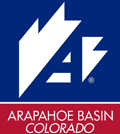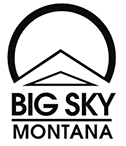Ignore Resort Safety Code at Your Peril
Sliding down an icy or snow-covered slope under control is an inherently dangerous pastime. Throw in any number of assorted outside influences and you’re looking at potential catastrophe.
Last season, 57 people died and another 54 suffered catastrophic injuries in various ski and snowboard accidents at American resorts, according to National Ski Area Association (NSAA) statistics. And who knows how many other riders were able to walk away relatively unscathed after a close brush with mayhem?
Those numbers may seem insignificant in the light of the fact that the 473 American ski resorts in operation during the 2021-22 season attracted a record 60.695 million visitors to their slopes, but even one fatality or catastrophic injury is one too many.
And another thing: The number of gruesome incidents is rising. The 57 deaths were 17 more than the 10-year average, while the 54 catastrophic injuries were 10 more than the 10-year average.
There probably will be no way that we can zero out the number of bad accidents; in order to do that, we’d have to eliminate all potential risk factors. Do that and you also get rid of an essential, attracting part of skiing and snowboarding: The adrenaline rush of risk.
Know the Code
However, there are ways to mitigate the potential for injury; 10 of them in fact.
Devised by the NSAA and the National Ski Patrol, Your Responsibility Code is vital means of getting the skiing and snowboarding public to be aware of and help reduce the potential dangers and risks in the sport:
- Always stay in control. You must be able to stop or avoid people or objects.
- People ahead or downhill of you have the right-of-way. You must avoid them.
- Stop only where you are visible from above and do not restrict traffic.
- Look uphill and avoid others before starting downhill or entering a trail.
- You must prevent runaway equipment.
- Read and obey all signs, warnings and hazard markings.
- Keep off closed trails and out of closed areas.
- You must know how and be able to load, ride and unload lifts safely. If you need assistance, ask the lift attendant.
- Do not use lifts or terrain when impaired by alcohol or drugs.
- If you are involved in a collision or incident, share your contact information with each other and a ski area employee.
Another Approach
There are segments of winter sports society that think this tick list might not be enough.
Enter Tomasz Miaskiewicz, a professor at Fort Lewis College in Durango, Co., who is tasking his marketing research class to come up with a better plan in its Slide With Respect project.
Miaskiewicz and company are conducting “a study of behavior at and opinions of ski areas, perceptions of on-slope safety and the development of messaging so that various groups ‘slide with respect.’”
“We suspect,” Miaskiewicz says, “that the person in the park needs to be messaged differently from the Sun Belt family that travels to a ski area for a one-week period.”
To get input for the project Miaskiewicz’s students gathering data via a survey, which anyone can fill out before the December 15 deadline (you’ll be entered into a swag raffle as well). The results will be discussed and perhaps implemented in the new year.
Featured Resorts

Killington Resort

Hunt Hollow

Pico Mountain

Mammoth Mountain

Palisades Tahoe

Arapahoe Basin

Aspen Snowmass

Sugarloaf

Sunday River

Big Sky

